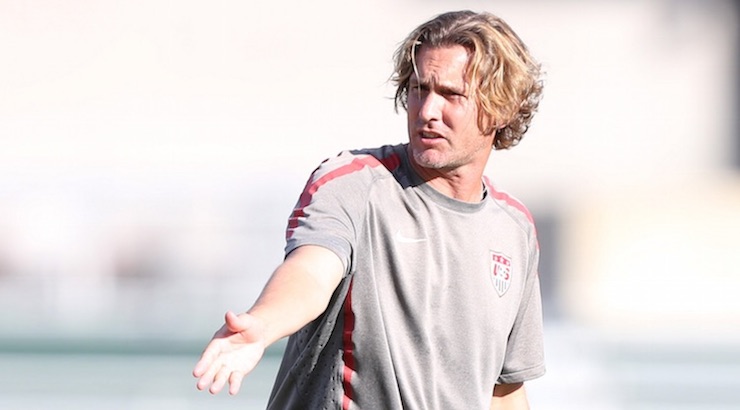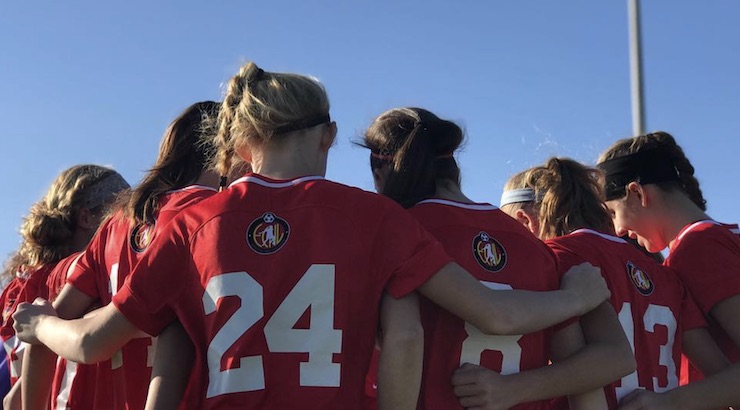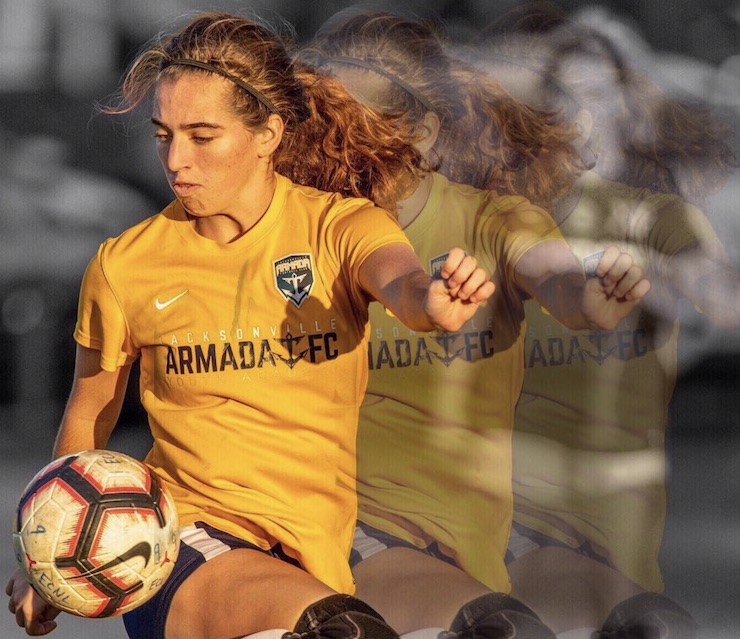Recruiting Girls in Middle School for College? Really?
“I absolutely think the recruiting process starts too young for girls, ” says Christian Lavers.
Youth Soccer News: Elite Clubs National League (ECNL) is nationally recognized as a development program for college-bound amazing young players. With 88 member clubs all across the USA, ECNL provides the opportunity for college coaches to scout players at showcases and event throughout the year.

Girls ECNL National events now include Phoenix (Fall & Spring), South Carolina, Florida, Texas, New Jersey with the National Playoffs held in San Diego from June 25 – July 1, 2019, and the Finals — known as the ECNL Final Four — later in the summer.
But when is a player too young to be recruited?
We wanted to ask Christian Lavers, President of both Boys ECNL and Girls ECNL, for his thoughts on the topic. Lavers has pioneered the development of elite girls soccer since 2009.
A new series of interviews with Lavers also includes — Part 1 ECNL’S CHRISTIAN LAVERS ON COACHING IN AMERICA – WE ALL HAVE TO DO BETTER is on Developing Thinking Players, Part 2 ECNL’S CHRISTIAN LAVERS ON ONE PATHWAY FOR DEVELOPING PLAYERS IS UNREALISTIC
SoccerToday: A Conversation with Christian Lavers

Read Articles on SoccerToday Written by Christian Lavers
Diane Scavuzzo: What advice do you give a player who’s getting recruited? And do you think the girls are recruited too young?
Christian Lavers: I absolutely think the recruiting process has been starting too young on the women’s side.
That said, I am really encouraged by the recent rule changes passed by the NCAA to help change that because later recruiting and decision-making will be better for everyone – players, colleges, coaches, and parents.
The reality is that players change significantly, in performance levels, perspective, desires, even sometimes personality, between 8th grade and senior year, and it’s a real challenge and risk for everyone involved when decisions are made very young.
First, early recruiting adds huge pressure when players are right in the middle of some of their most important development years. That can impact the enjoyment of the game, the speed of learning, and more.
Second, there are simply going to be more mistakes – on both sides – when young players are making choices before they really know what they want, and so many years before they will play collegiately.
Every player’s recruiting timeline is unique.

A player’s recruiting timeline is based on where they are in their own development, where they are in their personal maturity, family factors, and where the schools themselves are in their unique process.
We need to understand that, and we need to communicate that to players and families that feel they are missing something because someone else makes a decision or is recruited before they are. It’s a great start to try to make it more difficult for some of these very early decisions to be made.
I really hope that the new rule changes will force a later start in the recruiting process, and I congratulate the NCAA on acting on this issue

Diane Scavuzzo: So coaches who are feeling that they have to start recruiting middle school kids because otherwise, somebody else will grab these players — What would you say to them?
Christian Lavers: I’d say that statement is a false dichotomy, and it needs to be reframed.
As soon as we use the size or complexity of a problem as a reason to avoid trying to fix it, then we forfeit leadership.
Where do we start to fix any problem with that mentality?
That sort of rationalization would mean we couldn’t solve any ill in society because someone somewhere will take advantage.
I think the rule changes should really help this, they will hopefully bring a sense of relief to everyone, and they will help make the environment better.
Read: Christian Lavers on IDENTIFYING & WATCHING A DEVELOPMENTAL SABOTEUR





